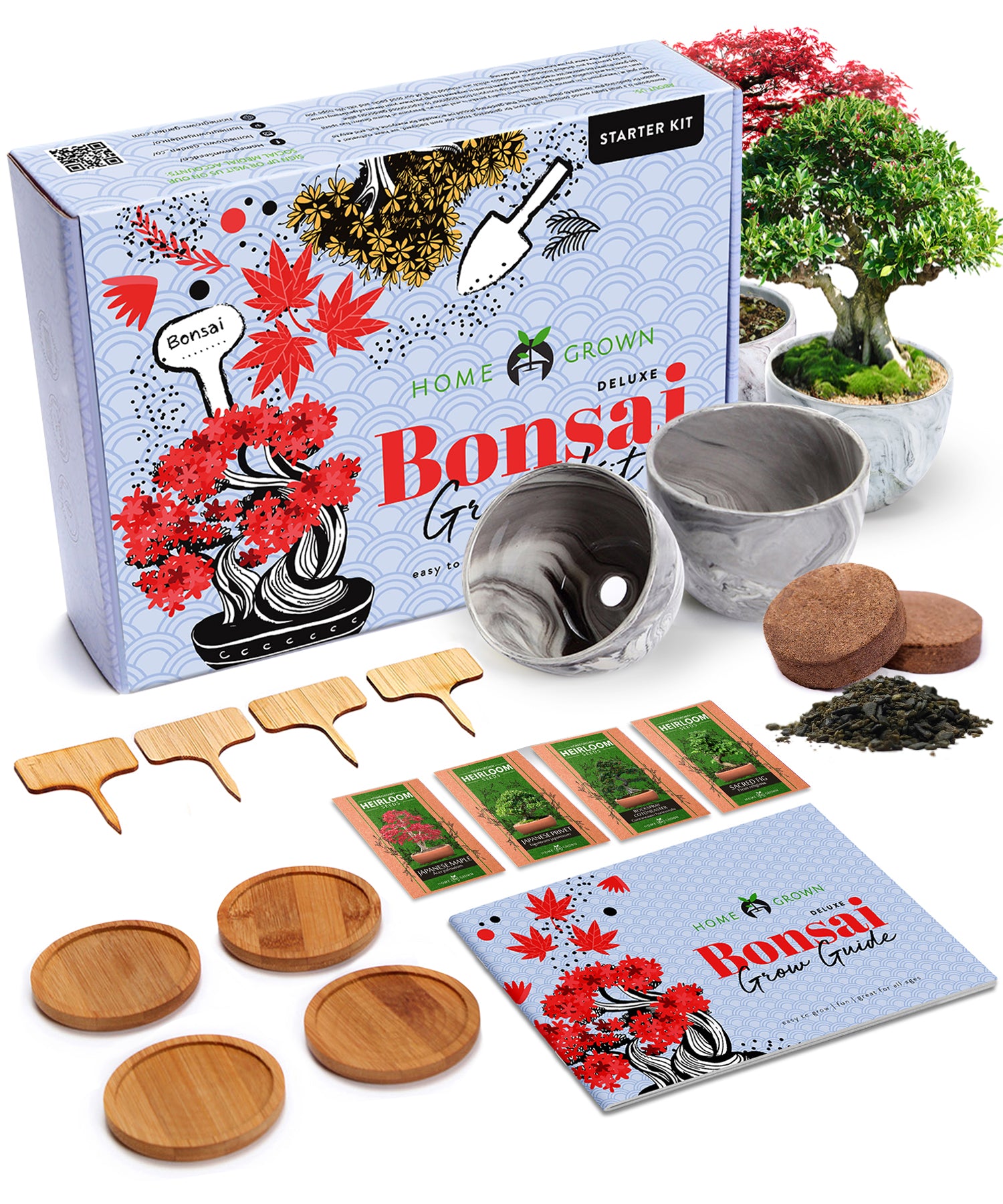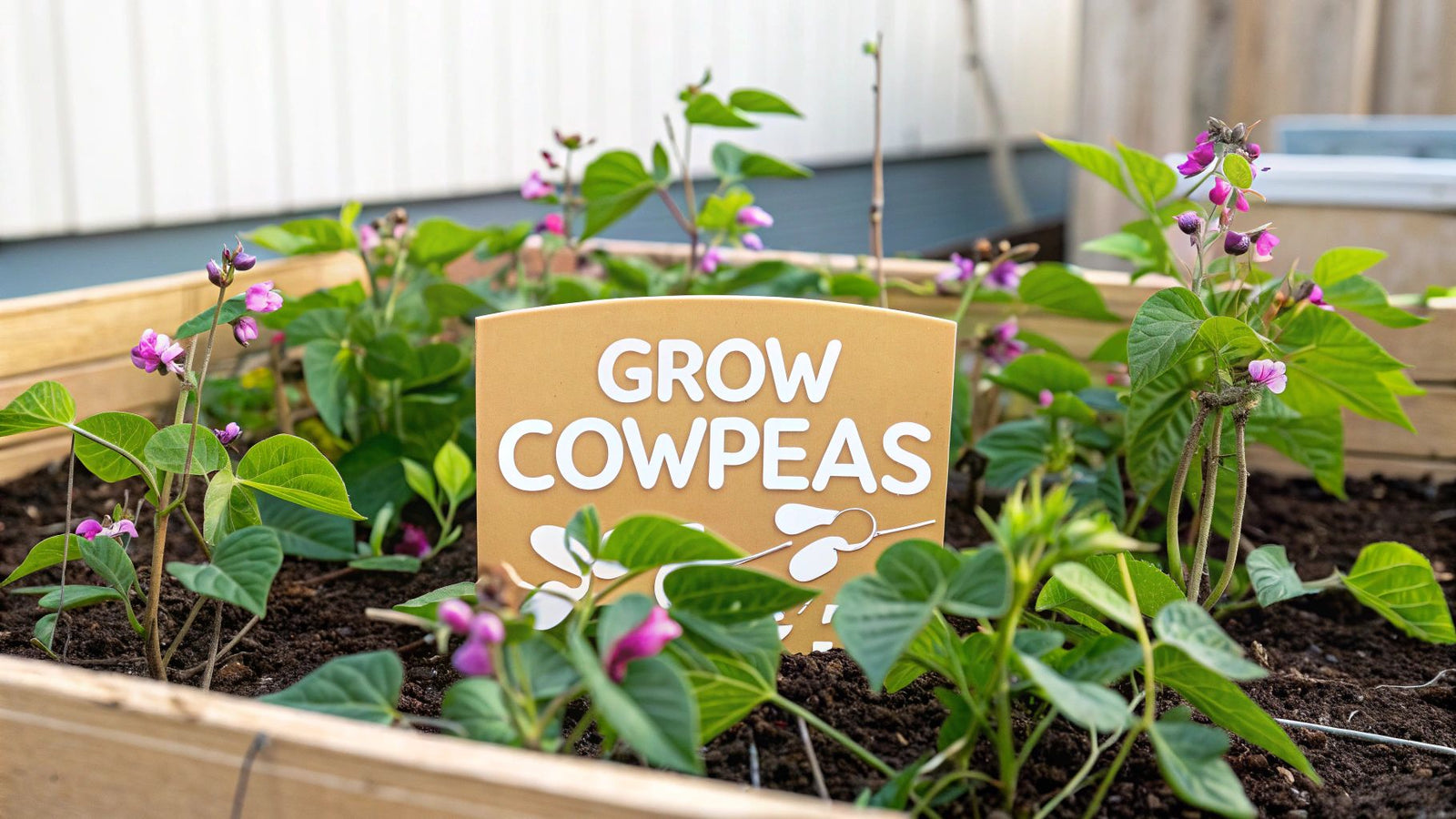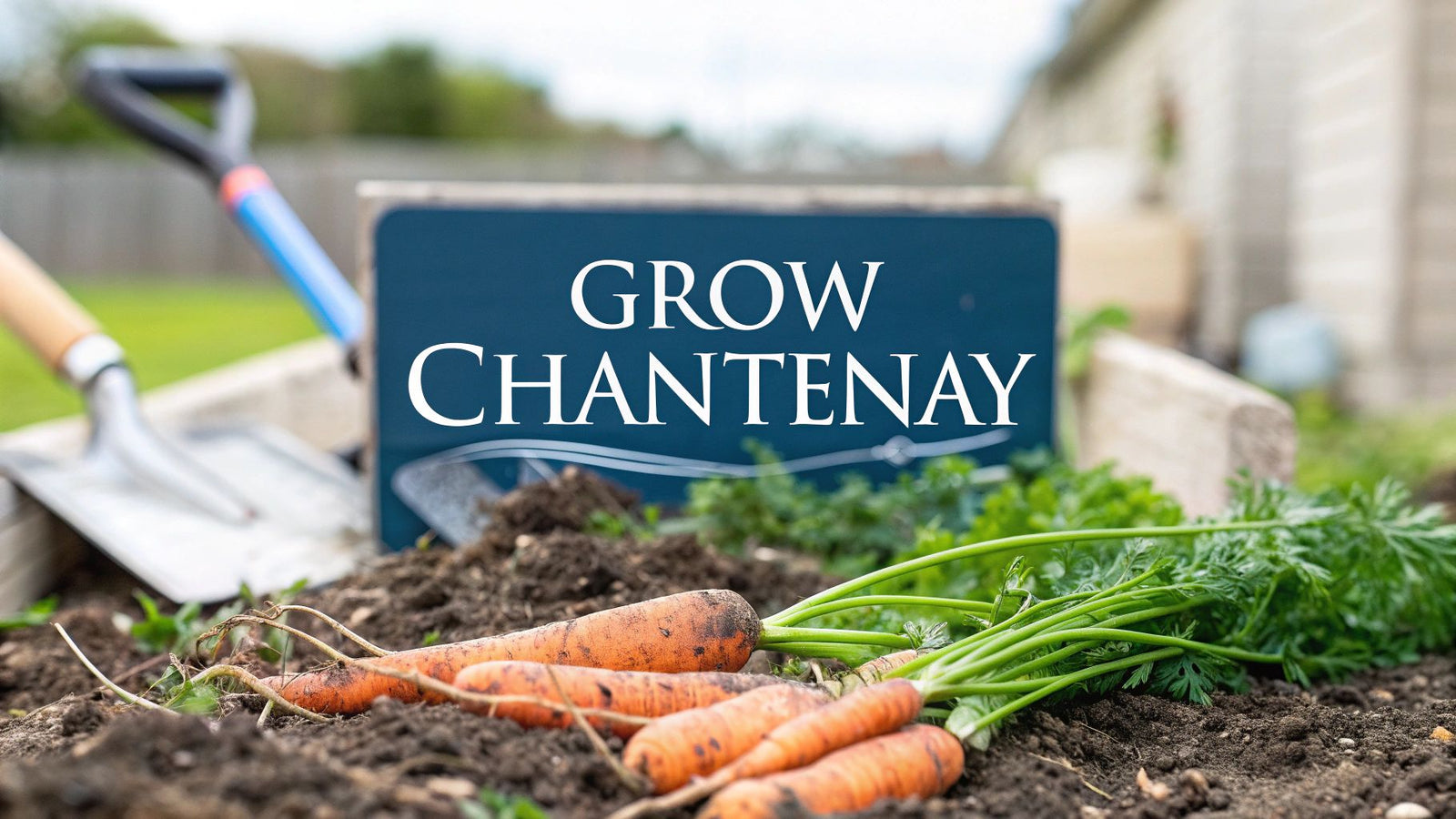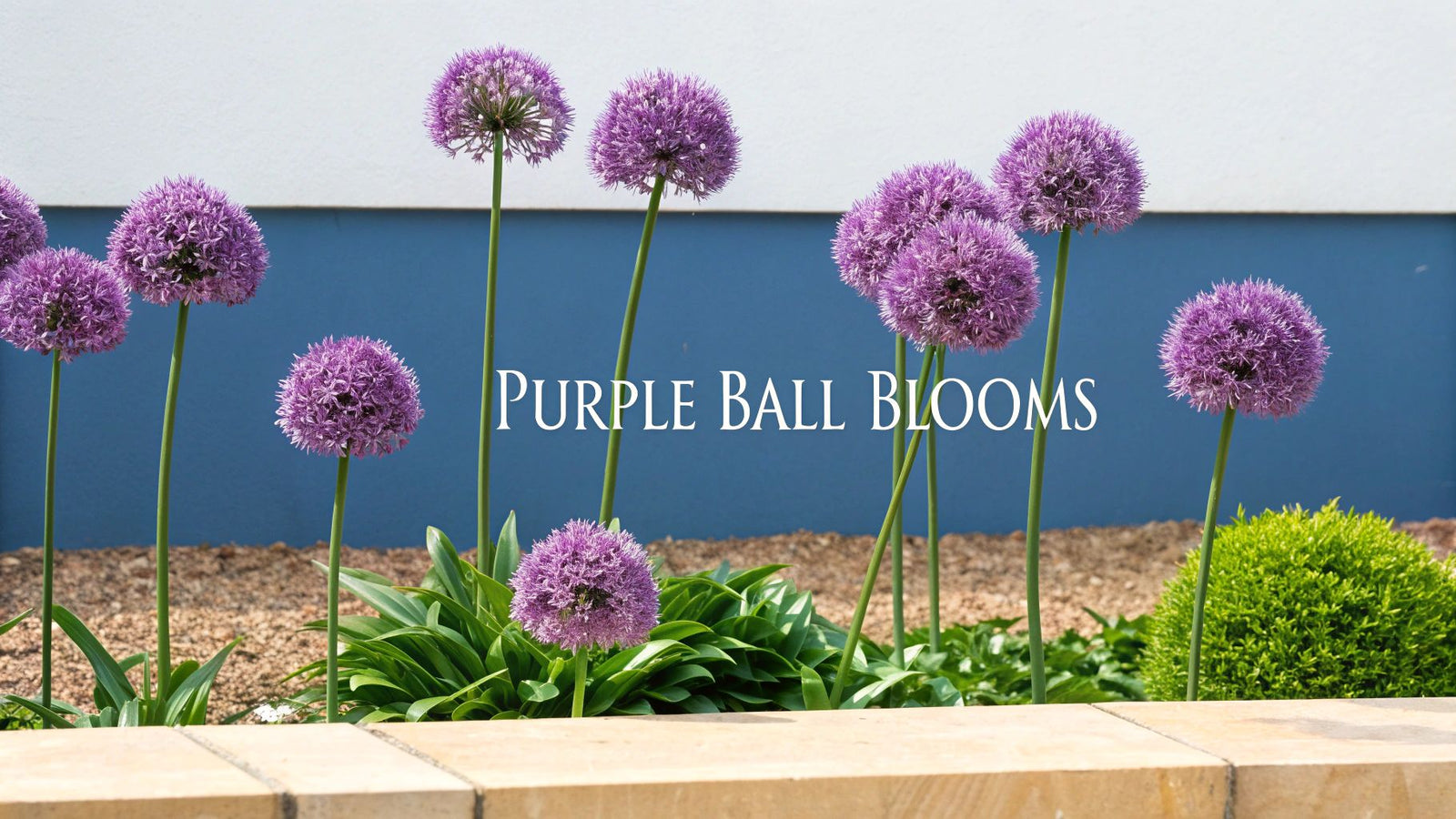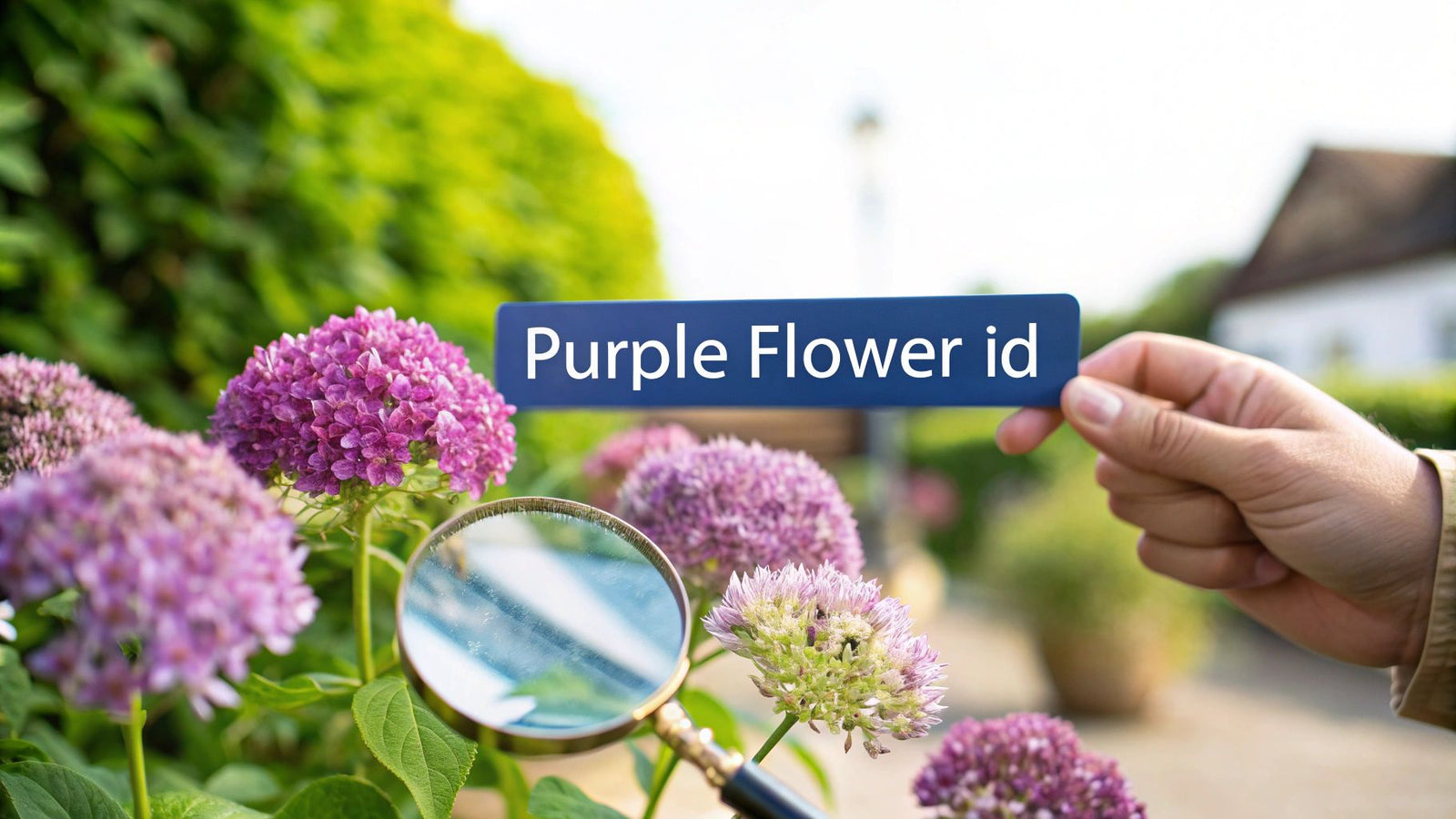
Learning to identify purple perennial flowers is all about training your eye to spot the key differences in their shape, size, and leaves. To get started, just focus on the most obvious features. You'll quickly learn to tell the tall, spiky blooms of a Salvia from the soft, rounded flowerheads of Garden Phlox, and that's the perfect first step to building your confidence.
1. Start with 11 Common Purple Perennials You Can Identify Instantly
Jumping into flower identification can feel a bit overwhelming, but the trick is to start with the most common varieties. These plants are garden staples for a reason—they're gorgeous, dependable, and have distinct features that make them great for learning.
It's no surprise they're so popular. People's love for adding these vibrant colors to their gardens is part of a massive global interest in ornamental plants. In fact, the market for these flowers hit roughly USD 27.23 billion in 2022 and is only expected to grow. You can read the full research about the global flower market to see just how big it is.
For now, let's focus on the immediate visual clues that will help you tell one purple beauty from another right in your own backyard.
Start by Building Your Visual Toolkit
Think of this as your first lesson in plant forensics. You don't need a botany degree to start noticing the little things that set plants apart. Ask yourself simple questions:
- Is the flower a tall, dramatic spike or a low-growing mound?
- Are the individual blooms packed tightly together or spaced out along the stem?
Answering these basic questions is how you start. For instance, both Lavender and Salvia have spike-like flowers. But once you look closer, you'll see Lavender’s blooms are much more compact, and its foliage has that unmistakable silvery-green hue and fragrance.

Sometimes, how long a plant blooms can be a dead giveaway. As you can see, Lavender often gives you the longest show, providing gorgeous color for up to 12 weeks.
Common Purple Perennials at a Glance
To make things even easier, here’s a quick-reference table. It’s designed to help you quickly narrow down the options when you’re out in the garden and see a purple flower you can't quite place.
| Flower Name | Key Feature | Average Height | Bloom Season |
|---|---|---|---|
| Salvia | Tall, upright flower spikes | 18-36 inches | Late spring to fall |
| Coneflower | Drooping petals around a spiny central cone | 2-4 feet | Summer |
| Lavender | Dense, fragrant flower spikes on silvery stems | 1-3 feet | Late spring to summer |
| Bellflower | Bell- or star-shaped flowers | 6 inches - 3 feet | Late spring to summer |
| Garden Phlox | Large, rounded clusters of small flowers | 3-4 feet | Mid to late summer |
This table isn't exhaustive, of course, but it covers some of the most common purple perennials you're likely to encounter. Use it as a starting point to train your eye on what to look for.
Expert Tip: Always look at the plant's overall shape, or what gardeners call its "habit." A sprawling groundcover like Creeping Phlox is impossible to confuse with an upright, stately Delphinium, even from across the yard. Taking in the whole picture is often the fastest way to figure out what you're looking at.
2. Look Closely at Flower Shape and Structure
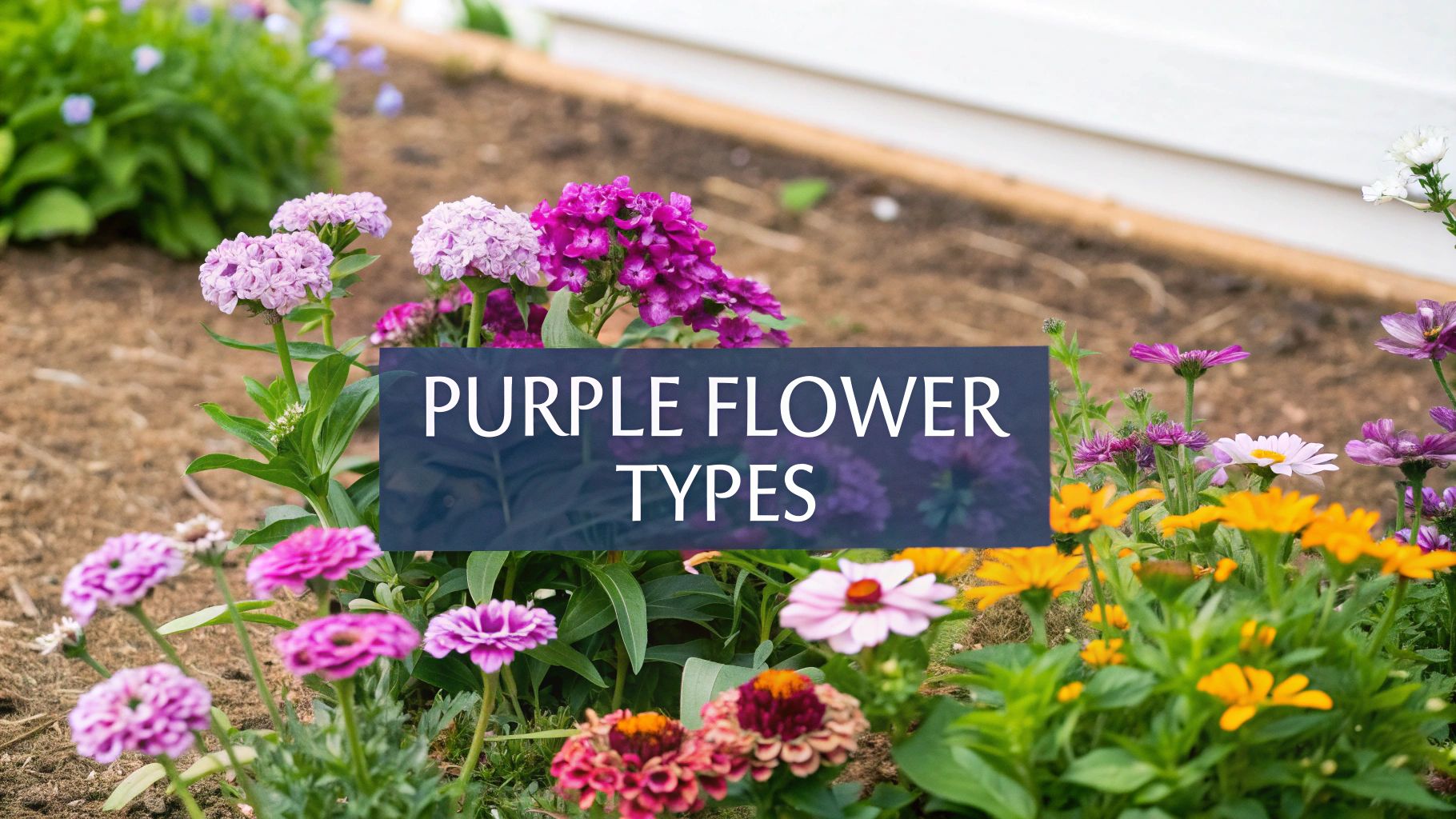
The bloom itself is often the most telling clue you have. This is where you really need to get up close and personal, putting on your detective hat to spot the small details that set one plant apart from another. The world of flower morphology is surprisingly diverse, and once you start seeing the patterns, it’s a total game-changer for identification.
First, notice how the flowers are arranged on the stem. Do they stand alone, or are they grouped together? This overall structure is a huge signpost.
- Spikes: Think of the tall, elegant spires of Delphiniums or Lupines, where flowers are attached directly up a central stalk.
- Clusters: Bee Balm and Garden Phlox are great examples of this, with their dense, rounded heads packed with tiny individual flowers.
- Whorls: This is a key trait for many Salvias, where the blooms circle the stem at intervals, like little rings.
Decoding Different Flower Forms
Beyond the arrangement, the shape of a single bloom is your next big clue. A classic daisy-like flower, with petals radiating out from a central button, will immediately bring Asters or maybe even some Coneflowers to mind.
Then you have the unmistakable shapes, like Bellflowers (Campanula). Their name says it all—those hanging, bell-shaped flowers are pretty hard to mix up with anything else. Irises are another standout, with a complex structure that’s a dead giveaway. The Bearded Iris, for instance, has three upright petals (called "standards") and three that hang down (the "falls"). Once you see it, you'll never forget it.
When you're just starting out, don't worry about the scientific terms. Just describe what you're seeing in plain language. Is it shaped like a trumpet, a star, a cup, or a bell? This simple practice of observation will build your skills much faster than trying to memorize a bunch of botanical jargon.
Examining the Petals and Centers
Now, it's time to zoom in. The petals tell their own story. Are the edges smooth, or are they frilly, fringed, or even notched? Take a Dianthus, for example; its petals often have a jagged edge, almost as if someone took pinking shears to them. That one tiny detail can be the key.
Don't forget to look at the flower's center. Does it have a big, prominent cone like an Echinacea? Or is it a fuzzy little cluster of stamens, like you'd find on a Spiderwort (Tradescantia)? These features are incredibly consistent within a species and are vital for a positive purple perennial flower identification.
These details might seem small, but they’re the definitive evidence you need to solve your plant mystery. Honing this eye for detail is a skill that pays off all over the garden, even when you’re learning about the best perennial vegetables to plant this summer. By patiently observing these little structural clues, you'll soon be able to tell the difference between even the most similar-looking purple perennials with real confidence.
3. Don’t Just Look at the Flowers—The Leaves and Stems Hold the Real Secrets

It’s easy to get mesmerized by a beautiful purple bloom, but if you really want to know what you're looking at, your eyes should travel downward. The leaves and stems are where the plant reveals its true identity. This is a trick seasoned gardeners use all the time for purple perennial flower identification, and it's a game-changer.
Why? Because foliage is around long before and after the flowers make their brief appearance. Learning to read the leaves helps you understand your garden even in the off-season.
Leaf shape is often the first and most obvious clue. Some perennials have foliage so unique that once you know it, you can spot them from a mile away.
- Sword-like Leaves: Think about a Siberian Iris. Those long, flat, blade-like leaves shooting up in a grassy clump are unmistakable. You’ll never confuse them with something like a Salvia.
- Heart-shaped Leaves: If you see broad, heart-shaped (or cordate) leaves forming a lush mound, you might be looking at a Hosta, many of which send up lovely purple flower spikes. The leaves are the real giveaway here.
- Lobed or Finely-cut Leaves: Take Russian Sage, for instance. Its silvery-grey foliage is cut into delicate, feathery segments, giving the whole plant an airy feel. Delphiniums are another great example, with deeply lobed leaves that almost look like a splayed hand.
Getting a Feel for Texture and Arrangement
Beyond just the shape, the texture of a leaf can tell you a surprising amount. Don't be afraid to gently touch it. Is it smooth and waxy like a Hosta? Or is it fuzzy and soft, like Lamb's Ear (Stachys byzantina), which often produces spikes of purple flowers? That tactile clue can narrow things down in an instant.
Next, look at how the leaves attach to the stem. This pattern, technically called phyllotaxy, is a core botanical clue.
- Opposite: You'll see leaves growing in pairs, directly across from each other on the stem. This is a classic trait of the mint family, which includes popular purple bloomers like Catmint (Nepeta).
- Alternate: The leaves are staggered, appearing one at a time as you move up the stem.
- Whorled: This is a less common but very distinct pattern where three or more leaves emerge from the same point on the stem, circling it like a collar.
A plant's foliage is its fingerprint. The unique combination of shape, texture, color, and arrangement tells its story. Mastering these details not only prevents mix-ups but also helps you become a more observant gardener. It's a skill, just like learning to spot when a plant is in trouble. While the link focuses on succulents, many of the observational principles on how to identify and solve common succulent issues can be applied to other plants in your garden.
Finally, take a look at the stems themselves. A square stem is a dead giveaway for the mint family—a massive group that includes Salvia, Bee Balm, and Agastache. Roll the stem between your fingers. Is it round? Hairy? Smooth? Woody? When you combine these subtle details with what you've observed about the flowers, you'll be identifying plants with confidence in no time.
4. Take a Step Back: Assess the Plant's Overall Shape
You’ve gotten up close and personal with the flowers and leaves, which is fantastic. But now, it's time to take a few steps back and look at the whole plant. Its overall size and how it grows—what we gardeners call its habit—is one of the most powerful clues you have.
This bigger-picture view can instantly tell you what your mystery plant isn’t, letting you cross off dozens of possibilities right away. Is it a low, ground-hugging carpet of purple? Or is it a towering giant that commands attention at the back of the border? Answering that one question works wonders.
Learning to Read a Plant’s Posture
A plant’s habit is its personality in the garden. Some are tidy and well-behaved, forming neat mounds, while others are wild, architectural, and a bit unruly. Getting a feel for these basic growth forms is a game-changer.
Let's break down the most common ones you'll see:
-
Mounding: These plants grow into a soft, rounded clump. The classic example is Catmint (Nepeta), which forms a beautiful, billowy mound of grey-green leaves and lavender-purple spikes. If your plant looks like this and stands about 1-3 feet tall, Catmint should be high on your list.
-
Upright: Think vertical. These perennials shoot straight up, adding height and drama. Liatris (Blazing Star) is a perfect example with its unmistakable bottle-brush flower spikes. Tall, stately Delphiniums also fit this mold, reaching for the sky.
-
Spreading or Creeping: Low and wide is the name of the game here. These are the ground-cover specialists. Creeping Thyme forms a dense, fragrant mat that rarely gets taller than a few inches. If your purple flower is hugging the earth, you know it's not one of the garden giants.
I always think of a plant's habit as its silhouette. Once you learn to recognize these fundamental shapes—mounding, upright, and spreading—you can make a pretty good guess from across the yard. It's the first filter I use before I even get close enough to see the leaves.
Let Height Be Your Guide
This might sound obvious, but you’d be surprised how often people skip this simple check. Grab a measuring tape, or just eyeball it—how tall is the plant at its peak?
A towering purple perennial that’s easily 4-6 feet tall can't possibly be a 'Blue Clips' Bellflower (Campanula carpatica), which barely reaches your ankle. That single measurement just saved you a ton of time.
Let’s say you’re looking at a mystery plant that’s about 3 feet tall with spikes of purple flowers. Your brain should immediately jump to plants in that mid-range, like 'May Night' Salvia or maybe a Garden Phlox. At the same time, you can confidently rule out shorter contenders like Dwarf Iris or much taller ones like Joe Pye Weed. This simple observation is a critical piece of the puzzle.
5. Read the Environmental and Location Clues
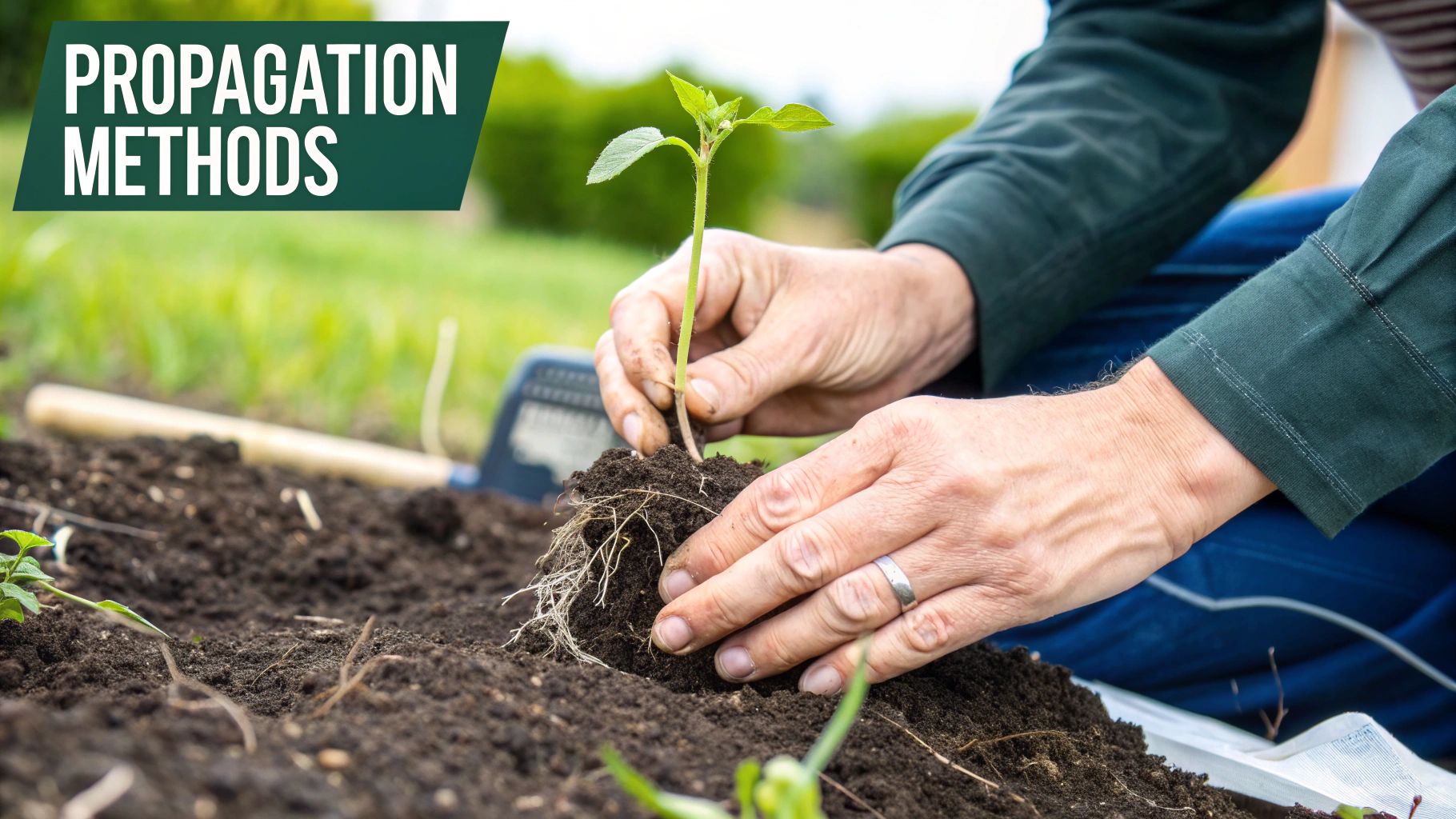
Sometimes, the best clues for identifying a mystery plant aren't on the plant itself but all around it. The specific spot where a purple perennial is thriving can tell you almost as much as its flowers or leaves. If you learn to read these simple ecological signs, you can make a surprisingly accurate guess before you even get up close.
Think of yourself as a plant detective. Certain plants are specialists, perfectly adapted to a specific niche. A plant’s address—whether it’s a soggy patch by a pond or a dry, sun-blasted hill—is a dead giveaway.
Follow the Sunlight
Start by looking up. How much sun is hitting the plant throughout the day? This is a huge piece of the puzzle. A purple flower basking out in the open, with no shade in sight, is almost certainly a sun-worshipper.
- Full Sun: If a spot gets 6 or more hours of direct, unfiltered sun every day, you're looking at a full-sun perennial. This immediately brings to mind classics like Lavender, Coneflower (Echinacea), and Russian Sage—plants that would quickly fade in the shade.
- Part Shade: In a place that gets gentle morning sun but is protected from the harsh afternoon heat, you’re more likely to find a Hosta or a delicate Bellflower (Campanula).
- Deep Shade: It's not common to find a purple flower blooming its heart out under a dense tree canopy, but if you do, you've likely found a true shade specialist. Certain varieties of Lenten Rose (Helleborus) are prime suspects here.
Digging into Soil Conditions
Next, look down. A plant that is clearly happy in its soil is giving you a massive clue. For example, if you see a healthy, fragrant Lavender bush, you can bet the soil is dry, well-drained, and probably a bit alkaline. You simply won't find it flourishing in a bog.
On the other hand, spotting a magnificent Japanese Iris with its rich purple blooms tells you the soil is consistently damp, probably near a downspout, pond, or a low spot in the yard.
Some plants are such clear indicators of their environment. Take the invasive purple loosestrife (Lythrum salicaria); it has an incredible knack for thriving in wet, saturated soils and has unfortunately spread across nearly every U.S. state. According to information from the USDA, its presence is a near-certain sign of a wetland habitat.
Gardener’s Insight: I once spent weeks trying to identify a beautiful purple flower in a friend's garden. I was stumped. It wasn't until I noticed it was planted right at the base of a downspout, where the ground was always damp, that it clicked. It was a moisture-loving Lobelia. The location was the final clue I needed.
Knowing what conditions different plants prefer can help you narrow down the possibilities significantly. This table matches some popular purple perennials with the habitats where they feel most at home.
Matching Purple Perennials to Their Preferred Habitats
| Flower Name | Sun Preference | Soil Moisture | Hardiness Zones |
|---|---|---|---|
| Lavender | Full Sun | Dry, Well-Drained | 5-9 |
| Coneflower (Echinacea) | Full Sun | Dry to Medium | 3-8 |
| Siberian Iris | Full Sun to Part Shade | Moist | 3-8 |
| Salvia 'May Night' | Full Sun | Medium, Well-Drained | 4-8 |
| Bellflower (Campanula) | Full Sun to Part Shade | Medium | 3-9 |
| Hosta | Part Shade to Full Shade | Consistently Moist | 3-9 |
| Lenten Rose (Helleborus) | Part Shade to Full Shade | Moist, Well-Drained | 4-9 |
Using a plant's location as a filter is a powerful identification tool. By combining these environmental observations with the physical traits of the flowers and leaves, you get the complete picture. This holistic approach makes figuring out what's in your garden not just easier, but a whole lot more rewarding.
6. Pay Attention to When It Blooms
One of the most powerful, and often overlooked, tools you have for identifying a mystery plant is your calendar. Seriously. Just knowing when a flower blooms can immediately rule out a whole host of possibilities, making your detective work a lot easier.
A splash of purple popping up alongside the crocuses in early spring is a completely different plant than one that waits to show off in the dog days of summer. Think of your garden's flowering schedule as a built-in timeline, a natural story unfolding season by season.
Following the Garden's Calendar
Let's walk through a typical year to see how this plays out in the garden bed.
-
The Early Risers: Early spring is the time for small but mighty flowers that push through the last of the cold. If you're seeing purple in March or April, especially on low-growing plants, you're almost certainly looking at Crocuses or dwarf irises like Iris reticulata. They're in a hurry to bloom before the trees above them leaf out and block the sun.
-
The Mid-Summer Showstoppers: Once June hits and the heat sets in, the garden really comes alive. This is prime time for the tall, sun-worshipping purple perennials. Think of favorites like Bee Balm (Monarda), iconic Coneflowers (Echinacea), and the sweet-smelling spires of Garden Phlox. These are the mainstays of the summer perennial border.
-
The Late-Season Stars: Just when other flowers start to fade, a new group takes center stage. Asters are the undeniable champions of the fall garden, bursting into bloom and providing a critical late-season buffet for pollinators. If your purple flower is hitting its peak in September or October, Asters are your number one suspect.
A plant's life cycle is a direct response to its environment. Factors like temperature and rainfall are the very reason a plant evolves to be an annual or a perennial. This intimate connection is why certain perennials are so reliably tied to specific seasons—it’s baked into their DNA.
Don't forget to look for clues even after the color is gone. The distinct, spiky seed heads of a coneflower, for example, are a dead giveaway that lasts well into winter, offering both visual interest and a snack for visiting birds.
Learning to read these seasonal cues is just as crucial as knowing how to choose and grow perennial vegetables for a thriving garden. It gives you a year-round advantage in solving your plant mysteries.
7. Know the Answers to Common Questions
Even the most seasoned gardeners have questions. When you're trying to figure out what's growing in your yard or how to care for it, a little expert advice can go a long way. Let's dig into some of the most common things people ask about purple perennials.
What Are the Easiest Purple Perennials for Beginners to Grow?
If you're just starting out, you want plants that are beautiful but also forgiving. I always recommend three tried-and-true purple powerhouses: ‘May Night’ Salvia, Catmint (Nepeta), and Coneflower (Echinacea purpurea).
What makes them so great for learning purple perennial flower identification is how different they all look.
- Salvia gives you those classic, upright flower spikes that add a wonderful vertical accent.
- Catmint forms a soft, billowy mound that’s perfect for softening garden edges.
- Coneflower has that iconic daisy shape, with petals drooping from a prominent, spiky center. You can't miss it.
Better yet, they're all incredibly tough. Once they've settled in, they can handle a bit of drought and don't demand much attention, yet they'll reward you with a spectacular show year after year.
How Can I Tell if a Purple Flower Is a Perennial or an Annual?
Honestly, the most reliable test is just waiting. If the same plant pops up in the same spot next spring, you've got yourself a perennial. An annual, on the other hand, lives its entire life in one season and then it's done for good.
When you're buying plants, the tag is your best friend—it will always tell you if it's an annual or a perennial. If you're digging something up, you can often tell by the roots. Perennials tend to have a tougher, more substantial, and sometimes even woody root system compared to the finer, almost delicate roots of most annuals.
Why Are the Flowers on My Purple Perennial Fading?
Seeing your vibrant purple blooms wash out is a real bummer, but it's usually an easy fix. More often than not, the culprit is too much harsh, direct sun. Just like a piece of fabric, the intense sunlight can bleach the pigments right out of the petals, especially on those deep, dark purple varieties.
If sun isn't the issue, it could be a nutrient problem. Your soil might be low in key minerals like magnesium or phosphorus, which are crucial for producing rich, vibrant colors. Of course, it could also just be that the individual flower is getting old and is at the end of its life.
My advice? First, double-check the light requirements for your specific plant. If it’s in the right spot, try giving it a balanced flower fertilizer and see if the new blooms come in with more punch.
Ready to start your own vibrant garden? At Homegrown Garden, we offer a curated selection of high-quality seeds and gardening kits to help you succeed. Find everything you need to create the garden of your dreams at https://www.homegrown-garden.com.

